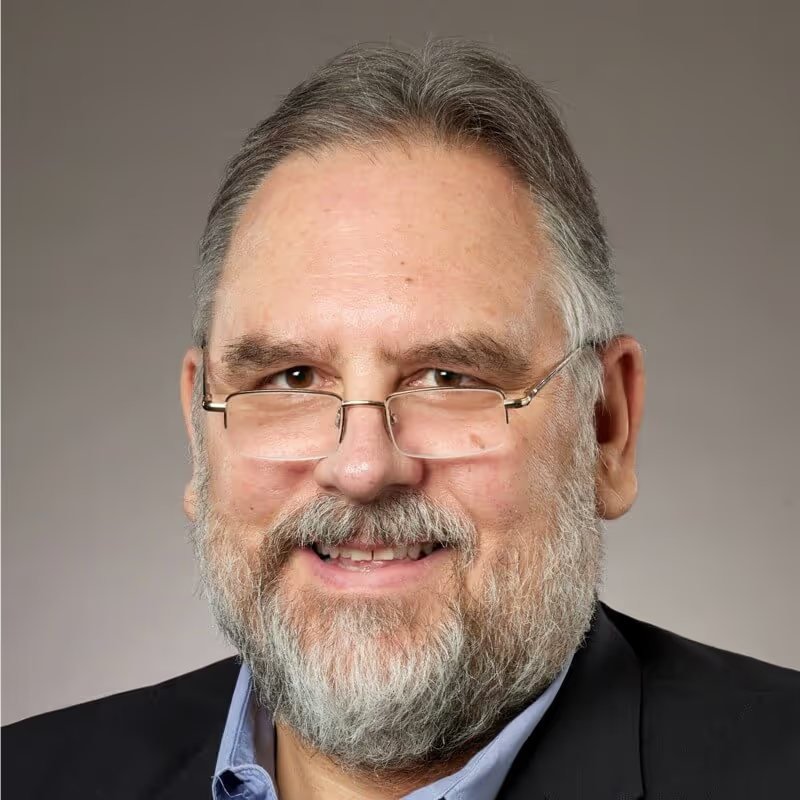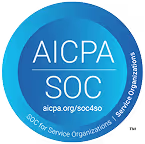This article has been updated to reflect changes to plan limits that went into effect on January 1, 2024. Here's what changed in 2024:
- 2024 IRA contribution limits: $7,000 for individuals 50 and younger (a $500 increase from 2023); $8,000 for individuals 50+
- 2024 401(k) contribution limits: $23,000 for individuals 50 and younger (a $500 increase from 2023); $30,500 for individuals 50+
- 2024 QCD distribution limits: $105,000 (a $5,000 increase from 2023)
- You'll be automatically enrolled in your employer's retirement plan on December 31, 2024
There’s been a lot of buzz around the SECURE 2.0 Act and its recent changes to U.S. retirement laws. Not only have existing rules been updated, but new rules have been put in place to help more Americans save for the future.
These changes will have a widespread impact on adults of all ages — meaning whether you’re a recent graduate or have been happily retired for years, you may be able to benefit from the updated laws.
Here’s what you need to know about the SECURE 2.0 Act and how it may affect you.
What is the SECURE Act?
Passed in 2019, the Setting Every Community Up for Retirement Enhancement Act — or SECURE Act — is a key piece of legislation that made it easier for small businesses to offer retirement benefits to their employees, and for individuals to save and plan for the future.
While the 2019 SECURE Act was considered a game changer for the retirement system, many felt there was still room for improvement.
On December 29, 2022, President Joe Biden signed the fiscal 2023 omnibus spending package into law, including sweeping changes to the SECURE Act. The new bill — dubbed SECURE 2.0 — includes many updates that will make it even easier for Americans to save for retirement.
What does this mean for you? Let’s dive in.
6 ways SECURE 2.0 may affect you in 2024
Whether you’re already retired, close to retiring, or still years away from retirement, the changes to the SECURE Act will likely affect you in some way. Some of these changes took effect on January 1, 2023, while others begin this year or next year.
No matter where you’re at in life or when these changes will occur, it’s important to be prepared. Here are six ways SECURE 2.0 may impact you — and when:
1. You’ll be automatically enrolled in your employer’s retirement plan in 2025
One quarter of all non-retired American adults have no retirement savings — and of those that do, more than half feel that their savings isn’t enough.
SECURE 2.0 aims to change that. Under the new act, employers will be required to automatically enroll employees in any new 401(k) or 403(b) retirement plans created after December 31, 2024.
If you haven’t already been enrolled in your company’s retirement plan, you now will be. Depending on your specific plan, this will mean that 3-10% of your income will be contributed to your retirement savings.
Keep in mind that this new rule won’t apply to everyone. Government retirement plans, religious institutions, businesses less than three years old, and businesses with 10 or fewer employees won’t be affected.
For more details, talk to your employer. They can walk you through the retirement plans they offer, what percentage you’ll be expected to contribute, and whether or not your company will match your contributions.
If you don’t want to enroll in your company’s retirement plan, you can also choose to opt-out.
2. You’ll be able to prepare for unexpected emergencies
Nearly two-thirds of American consumers have less than one month’s worth of income saved for an emergency — including many who have no savings at all.
When the unexpected happens, many turn to their retirement savings for help. But withdrawing from your retirement account can create extra costs, because any amount you withdraw is considered part of your taxable income.
SECURE 2.0 includes two key updates that will offer some relief in these emergency situations — and have a significant impact on people of all income levels:
- Beginning in 2024, you’ll be able to withdraw up to $1,000 from your retirement savings each year to cover personal or family emergencies. These funds will be penalty-free, meaning you won’t have to pay any fees or taxes on them.
- Also beginning in 2024, employers will be able to offer automatic enrollment in an emergency savings account of up to $2,500. These savings will be linked to your retirement plan, but won’t be subject to the same penalty taxes as the funds in your retirement account.
For more information, talk to your employer or retirement account provider.
3. You can make larger “catch-up” contributions to your retirement plan
Over half of Americans feel behind when it comes to saving for retirement.
Catch-up contributions are a way for anyone 50 and older to make additional contributions to their retirement accounts. These contributions aren’t subject to income tax, making them a smart, tax-savvy way to plan for the future and boost your savings.
SECURE 2.0 is increasing the maximum amount you can make in catch-up contributions each year, based on the type of retirement account you have.
If you have an IRA and are older than 50, you can contribute a total of $8,000 in 2024 (including a $1,000 catch-up contribution). This is an increase of $500 compared to 2023. Starting in 2025, anyone between ages 60-63 will be able to contribute up to $10,000 to their IRA.
If you have a 401(k), you can contribute a total of $30,500 in 2024 — a $23,000 base contribution, plus a $7,500 catch-up contribution.
By allowing larger catch-up contributions, more people can be better financially prepared for the future.

4. You may be able to pay off student loans sooner
A whopping 42.8 million people in the United States currently have student loan debt, with an average loan debt balance of nearly $40,000. With high interest rates and the cost of living rising, many struggle to build their savings on top of making their monthly loan payments.
This includes saving for retirement. Because many student loan borrowers struggle to pay their student loan debt and contribute to their future savings, they’re faced with the difficult decision to choose one or the other — and many opt to forgo retirement planning in order to pay off their debt.
Thanks to SECURE 2.0, they’ll no longer have to choose.
Starting in 2024, employers are able to make matching contributions for qualified student loan payments to 401(k), 403(b), or SIMPLE IRA plans. This will allow student loan borrowers to build their retirement savings while also paying down their student debt — without having to sacrifice one or the other.
Talk to your employer or student loan provider for more information on eligibility and enrollment.
5. You won’t have to make an RMD until you’re 73
At a certain age, you’re required to start making annual withdrawals from your pre-tax retirement accounts, like an IRA or 401(k). The minimum dollar amount you must withdraw each year is called your Required Minimum Distribution, or RMD.
Your RMD amount depends on several factors, like your age, marital status, and life expectancy. The withdrawal percentage can be up to 53% of your account balance.
Previously, Americans had to start withdrawing their RMD when they reached 72 years of age. Anyone who didn’t withdraw their RMD faced a penalty tax of 50% of the required withdrawal amount.
Starting on January 1, 2023, SECURE 2.0 increased the age you must start withdrawing your RMD from 72 to 73 years of age. This will change again in 2033, when the required beginning date for RMD withdrawals will increase from 73 to 75. SECURE 2.0 also lowered the penalty fee from 50% to 25% of your required withdrawal amount.
Delaying RMDs can help you save more for retirement — you get another year of tax-deferred savings in your retirement accounts. On the other hand, more money in a pre-tax retirement account means you'll have to pay more in taxes when you do eventually withdraw it. It's a good idea to consider your financial future, like when you’ll have to start withdrawing your RMD, how much you may be required to withdraw, and how you’ll distribute these funds.
6. You can donate more money to charity through QCDs
If you’re 70.5 or older, you can start donating funds directly from your IRA, 401(k), or other qualified retirement plan to qualifying charities. This type of gift is called a Qualified Charitable Distribution, or QCD.
In 2024, the QCD limit is capped at $105,000 (a $5,000 increase from 2023). This means that you can make a single QCD donation of up to $105,000 to one charity or split your gift between multiple charities for a collective total of $105,000 — but you can’t exceed this limit.
SECURE 2.0 is also expanding the QCD. Previously, QCD gifts could only be made to qualifying charities. In 2024, you can also make a one-time transfer of up to $53,000 to a charitable remainder annuity trust, a charitable remainder unitrust, or an immediate charitable gift annuity (a $3,000 increase from 2023).
QCDs offer many benefits, including:
- Reducing your income taxes. Funds distributed from a traditional IRA are generally included as part of your taxable income — which can increase your overall tax burden. But QCDs are an exception to this rule. These funds go directly from your IRA to your charity of choice, without going to you first. This lowers your overall income, which helps reduce your income taxes.
- Counting towards your annual RMD. Making a QCD donation counts towards withdrawing your RMD for the year. This benefits you because the amount of your donation isn’t counted towards your taxable income — meaning it may help you save on income taxes.
- Maximizing your charitable impact. A QCD lets you make a substantial gift in support of the causes closest to your heart. And because QCDs are generally not recognized as income, your favorite charities will receive the full amount of the gift — completely tax-free.
QCDs can be complex, so it’s important to understand the rules and regulations surrounding them before you make your gift. Now is a great time to learn more about QCDs, including how to use them and what benefits they have to offer. Be sure to speak with a financial or estate planning professional before making any gifts or transactions. They can answer your questions and help you make sure a QCD gift is right for your situation.
Put your affairs in order with an estate plan
Retirement planning is an essential part of preparing for the future. But there’s another important way you can plan ahead: Having an estate plan.
An estate plan details your final wishes about your assets, healthcare decisions, and finances. For many Americans, a last will and testament is the cornerstone of their estate plan. This important document gives you control over how your assets are distributed after you pass away, so you can support the people and causes that matter most to you long after you’re gone.
If you haven’t gotten around to creating an estate plan, now’s a good time to get your affairs in order. And FreeWill makes it easier than ever to get started. With our free will-making tool, you can create your will in just 20 minutes — completely for free.
Make your free estate plan today

Make your free advance healthcare directive

Make your free durable power of attorney

Make a stock donation today

Make your free revocable living trust










